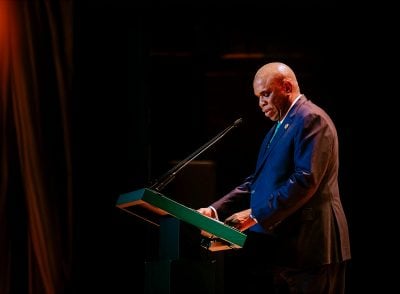
In December, the East African Legislative Assembly (EALA) passed a bill establishing the East African Financial Services Commission (EAFSC), one of the key steps on the road to achieving regional monetary union.
The EAFSC will work to harmonise financial services regulation, including in non-banking financial industries such as insurance, pensions, capital markets and microfinance, while promoting regional integration in the sector.
EALA speaker Martin Ngoga said: “This is one of the legacy bills this House has passed. It’s a bill that touches directly on a pillar of our integration. Therefore, we hope that the remaining step to assent by the Heads of State will not be delayed.”
However, the member states of the East African Community (EAC) have yet to decide where to locate the planned new central bank, to be called the East African Monetary Institute (EAMI). A report into the best location suggested somewhere in Tanzania but the conclusions appear to have been rejected by Kenya and Uganda. It is intended that the EAMI will take responsibility for overseeing East Africa’s banking sector before also assuming the role of regional central bank.
At present, most of the EAC institutions, such as the Legislative Assembly, Court of Justice and Competition Authority, are housed in Arusha in northern Tanzania until permanent homes for them are decided. Most member states would like to see a fair agreement on locating them as a whole, rather than ad hoc decisions on individual institutions being made.
At an EAC meeting in December, Burundi’s EAC minister and council of ministers chair, Ezekiel Nibigira, said: “In the financial sector, the Community resolved to establish the central bank to perform the job of a central bank, including prudential regulation of the banking sector. The council will decide the country to host the monetary institute, which will ultimately become the EAC central bank, prior to the adoption of a unified currency.”
That it has taken this long to create the EAMI is one of the reasons why the EAC is not on course to introduce a single currency by 2024 as planned, as the EAMI is one of the institutions scheduled to carry out preparatory work for the currency’s introduction.
Creation of two other planned institutions is also behind schedule: the Surveillance, Compliance and Enforcement Commission; and the Statistics Commission.
Slow progress on monetary union
Progress on regional financial and economic integration, as well as the harmonisation of banking regulations, has been slow since the EAC heads of state agreed to achieve monetary union by 2024, including the introduction of a single currency, when signing the relevant protocol in November 2013.
The introduction of a single currency would have profound implications for businesses and banks across the region by reducing transaction costs and cutting banks’ currency trading revenue.
There are three main elements to EAC economic integration: the creation of a common market, customs union and monetary union. In addition to harmonising monetary and exchange rate policies, the process also includes harmonising public financial management legislation, fiscal transparency and international tax treaties.
In December, an EAC report into the timetable for the process recommended pushing the deadline back from 2024 to 2031 because all member states were behind schedule, including on implementing the required protocols and achieving the macroeconomic convergence criteria.
The latter include a maximum headline inflation rate of 8%, maximum budget deficit of 3% of GDP, foreign exchange reserves cover of 4.5 months and a maximum gross public debt of 50% of GDP. Only three member states met the foreign exchange reserve target or debt-to-GDP goal in 2021 or 2022, while none have yet met all four criteria. The region’s national central banks had already cast doubt over the 2024 deadline.
The principal economist at the EAC Secretariat, Pantaleo Kessy, commented: “We have a roadmap that was supposed to be implemented between 2013, when the Monetary Union protocol was signed, and 2024. But we did not manage to implement most of the activities in that roadmap.
“According to the roadmap, the EAC convergence criteria were to be attained by 2021 and be maintained for three years in the run-up to the establishment of the Monetary Union in 2024.”
There have also been delays in the implementation of a cross-border payments system, although at least the delay gives East African banks more time to adjust.
IMF praises progress
In mitigation, however, the process of monetary integration usually takes longer than planned anywhere in the world.
In addition, at a joint EAC and IMF meeting in Washington DC in October, the deputy director of the IMF’s African Department, Catherine Pattillo, praised the progress that has been made to date towards achieving the macroeconomic convergence criteria and on coordinating the harmonisation of fiscal, monetary and financial sector policies.
Providing key decisions on balancing the needs and obligations of different member states can be reached, it genuinely feels, if closer economic and financial integration within the EAC is a realistic prospect rather than merely a vague aspiration.
The IMF is providing support on the development of a harmonised monetary policy framework and operations in preparation for monetary union; on capacity development; and also on macroeconomic analysis and forecasting.
It is also assisting with the modernisation of financial markets, including the development of a harmonised framework for Standing Facility and Collateral Management; and the promotion of cross-border trading in government securities.
Fear of Kenyan domination
Fear of Kenyan domination undermined the EAC’s previous incarnation and contributed to its collapse in 1977. It was revived in 2000 but Kenya still enjoys the region’s biggest GDP at $110bn in 2021, ahead of Tanzania with $68bn and Uganda with $41bn. Similarly, other governments in the region have been reluctant to open up their banking sectors out of concern that their own banks could be overwhelmed by their larger Kenyan rivals.
According to the African Business Top 100 African Banks survey for 2022, Kenya hosts the three biggest banks in East Africa as ranked by capital: KCB Bank, Co-operative Bank and Diamond Trust Bank Kenya, ahead of their two biggest Tanzanian competitors: Microfinance Bank and CRDB Bank, with Uganda’s biggest bank, Stanbic Bank Uganda, trailing behind.
Closer integration could also be delayed by the accession of Democratic Republic of Congo (DRC) to the EAC last July. International organisations can generally either widen their membership or deepen internal integration but rarely manage to achieve both at the same time.
Eastern DRC has historically been considered part of Eastern Africa because of its linguistic and cultural connections with the east coast but the DRC’s membership greatly changes the overwhelmingly Anglophone composition of the EAC.
Given that it is beginning the process of integration from a standing start, Kinshasa cannot be expected to complete the harmonisation of its economy and financial services sector on the same timetable as other member states.
To a lesser extent, the same could be said for South Sudan and even Burundi and Rwanda, which could result in a two-tier process of integration.
In the long run, however, the DRC’s inclusion could have a profound impact on the EAC, not least because its 96m population takes the Community’s total population up to 379m. Economic and regulatory harmonisation could eventually encourage much greater trade across a wide belt of Central-Eastern Africa, including in the banking sector, with Kenyan banks already active in the DRC.
Most recently, in December, KCB Group announced that it had completed the acquisition of an 85% stake in Trust Merchant Bank in the DRC, which has 109 branches, an 11% market share as measured by assets and $1.7bn in total assets.
It expects to complete a full takeover within two years. Kenya’s Equity Bank and Tanzania’s CRDB already operate in the country, with the latter setting up its own subsidiary in Katanga Province. Equity Bank has also been active in the DRC, taking an 86% share in ProCredit in 2017 and a 67% stake in Banque Commerciale du Congo in 2020.
Meanwhile, some effort has been made to lift banking standards across the region in preparation for closer integration. At the 5th East African Banking & Microfinance Forum in Nairobi in December, central banks, commercial banks and other financial institutions came together to discuss sustainable development as well as promoting best practice and strengthening sector operational resilience to help all banks in the region cope with greater competition.
Want to continue reading? Subscribe today.
You've read all your free articles for this month! Subscribe now to enjoy full access to our content.
Digital Monthly
£8.00 / month
Receive full unlimited access to our articles, opinions, podcasts and more.
Digital Yearly
£70.00 / year
Our best value offer - save £26 and gain access to all of our digital content for an entire year!
 Sign in with Google
Sign in with Google 



